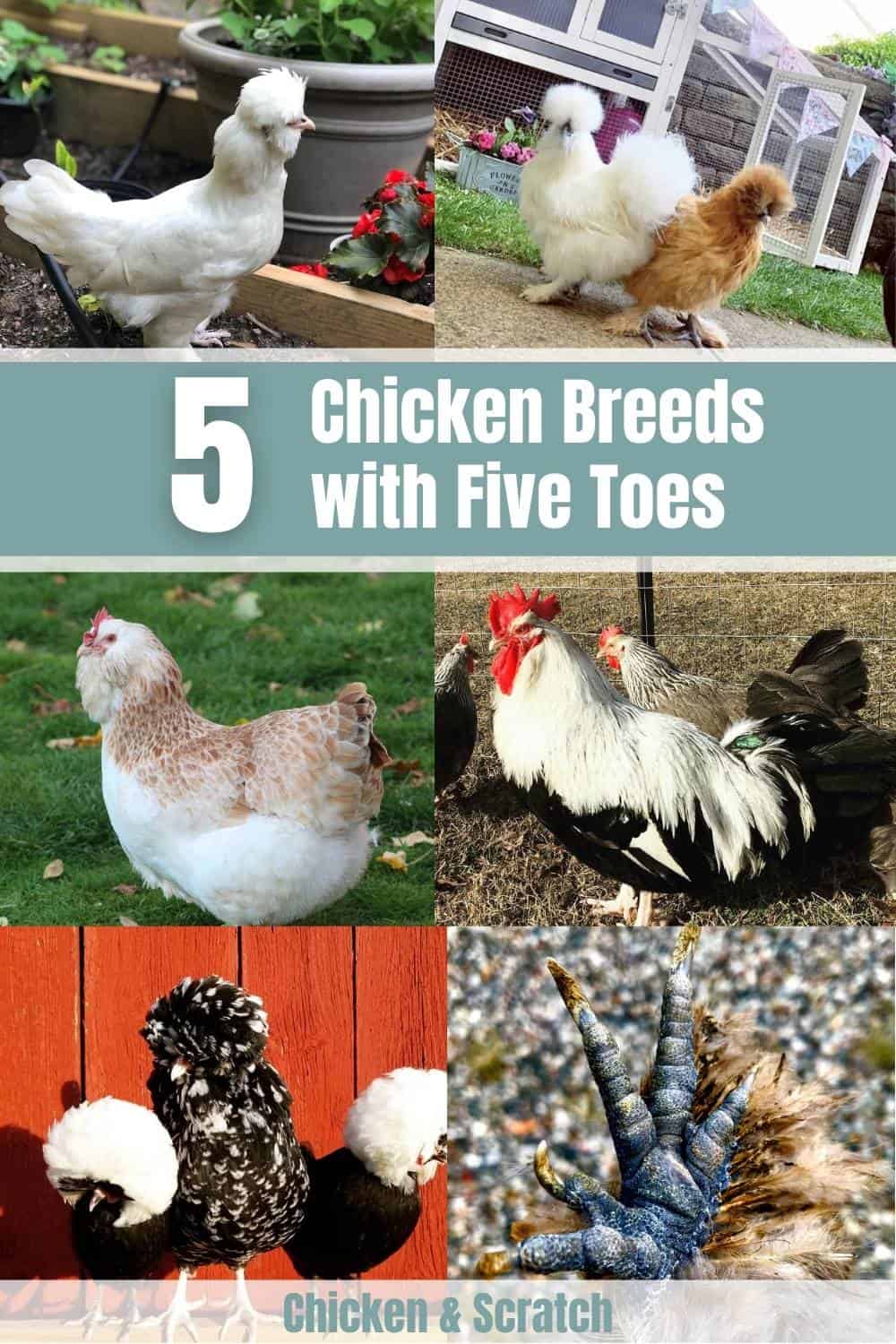Most of you believe that chickens have only four toes. Well, that is a nearly simple fact for almost all of them, except for these five unique chicken breeds with five toes, such as the non-bearded Silkie bantam, Faverolles, Sultan chicken, Houdan, and Dorking.
This rare condition of a chicken for having the fifth toe is called polydactyl. Similar to how some people having a fifth finger, the polydactyl does not serve a specific use. However, for these birds, their fifth extra toe is an essential feature of their breed.
Something about The Unique Chicken Feet with Five Toes
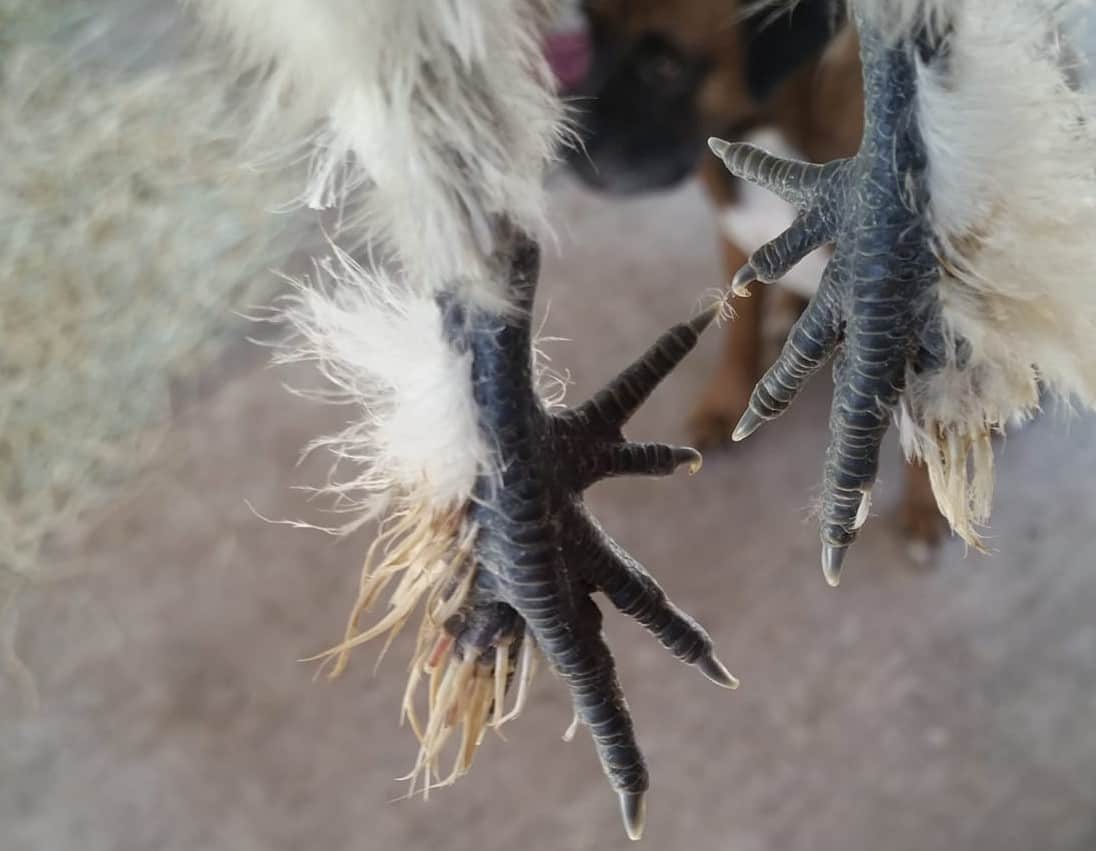
Only a portion of the bone in the ankle is included in the chicken’s foot. All bones in the ankle of other animals, especially mammals, are regarded as components of their foot. Chicken farmers refer to the ankle area as the “hock” and the ankle bone joint as the “hock joint.”
The fowl lacks a fully formed calcaneum, which is what gives humans their heels. Except for the chicken breeds named above, which are the five unique chicken breeds with five toes, no other chicken breed was recorded with more than four toes. In these 5 special breeds, the extra fifth toe usually protrudes over the base of the first toe, the “hallux”.
How Useful are the Chicken Toes for Them
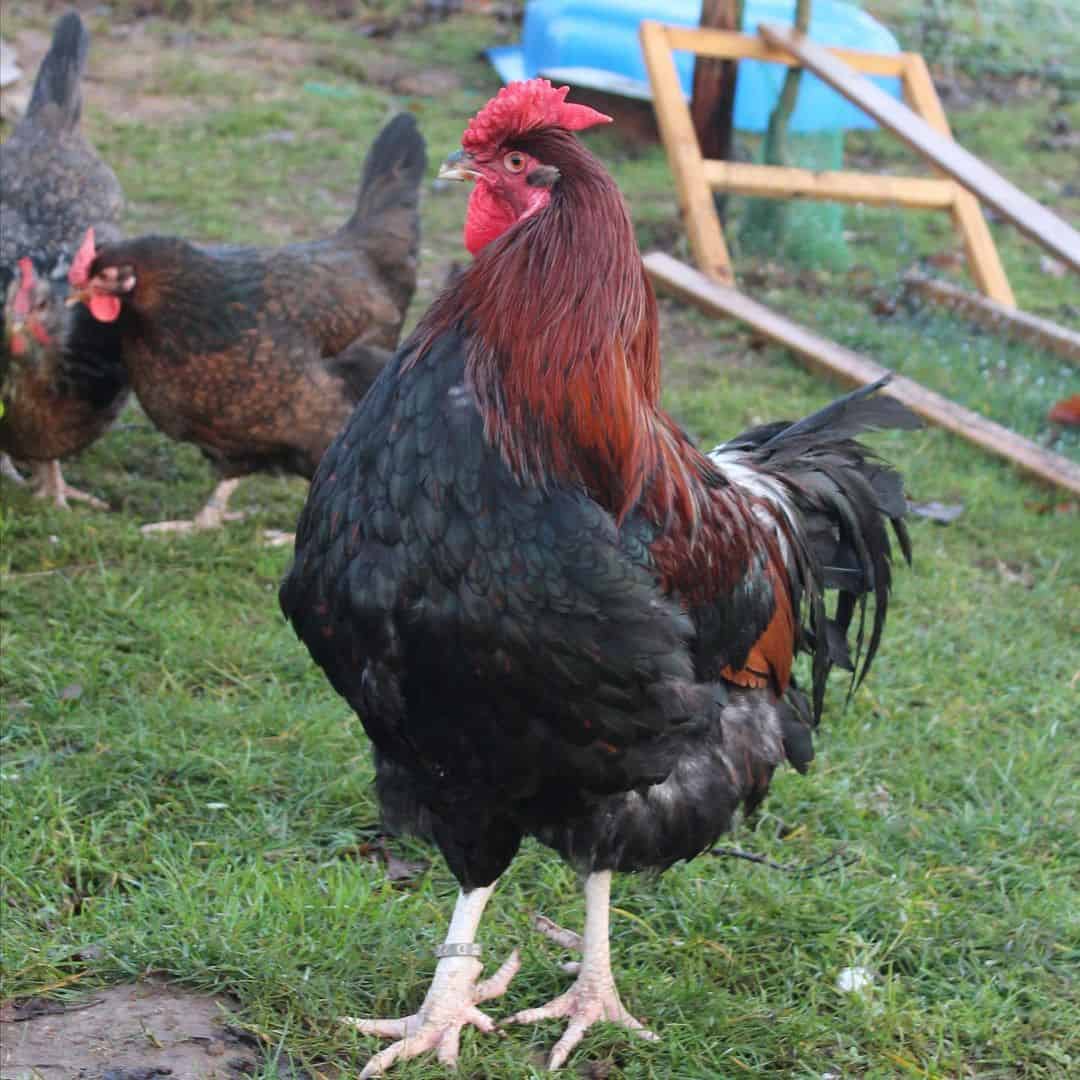
As with a lot of other animals, they rely on their feet and toes for a variety of tasks since they lack hands or front foot and the agility like humans have. These tasks include;
Roosting — chickens need to roost as high as they can, and a strong, firm hold of their toes is required to do this. A roosting perch should be present in their coop, and in free-range, they would prefer to sleep on the branches of the trees.
Digging — chickens like a nice dig, particularly if it results in a glorious dust bath for them. Chickens are capable of digging up a large amount of loose soil.
Holding — have you ever watched a chicken play first with its prey? Chicken’s instinct is to pin it down using their toes to keep the food in the place.
Scratching — they scrape around every corner in search of snacks such as worms and insects, which they find with their toes.
Walking — chickens spend the majority of their time on their feet. They enjoy wandering around every corner of the coop or yard. Chickens are very fast when it comes to running, and they are challenging to catch when they are fleeing.
1. Non-bearded Silkie Bantam
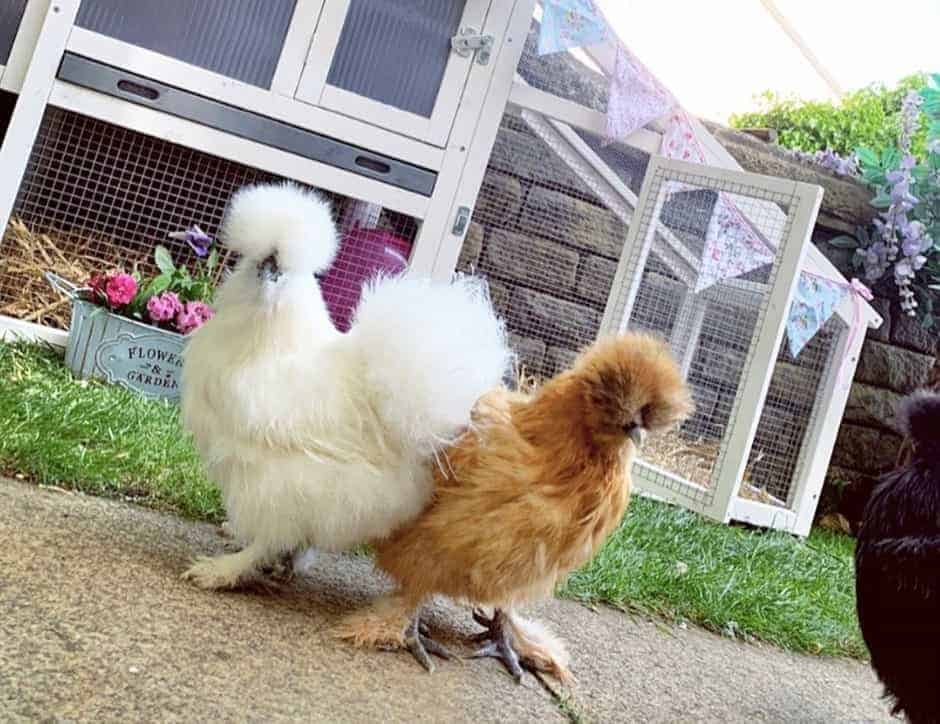
What the deal about non-bearded Silkie bantam, do you think? More than one characteristic of this chicken breed distinguishes it from others. These chickens have plumage, character, and features that are unlike any other chicken breed.
Would you want to learn more about this adorable and friendly Silkies? Aside from having thick, scruffy plumage that gives them the appearance of being very hairy, they are a chicken breed with 5 toes.
Despite their somewhat funny appearance, they have an enjoyable but kind attitude that appeals to both kids and grownups. It is believed that they are Asian birds that found their journey to the US sometime between the year 12th to 13th centuries.
Even though these birds are simple to manage, they do not thrive well in cold and wet environments. They are unable to fly, and they love to spend their time inside around their humans. Having said that, the majority of them roam outdoors in coops that are linked to chicken runs.
The fact that bantam Silkies are little chickens means that their breed is not the ideal choice for meat production. They can only produce up to over a hundred eggs each year, but if you have a huge flock, they will be able to contribute to a reduction in your annual food cost. Their eggs are tiny, light brownish, and delicious.
These birds are entertaining yet never too reactive. Their laid-back demeanor and silly nature make encounters with them amusing. These adorable chickens love to be around people and can spend the whole day sitting on your lap, and they like eating directly from your hands.
Hens are fascinated with rearing chicks, and as a result, they are often seen producing eggs, even though the eggs are not yet fertilized. Silkies are often docile in the presence of other, more energetic chicken breeds, which may lead to clashes and injury.
2. Faverolles
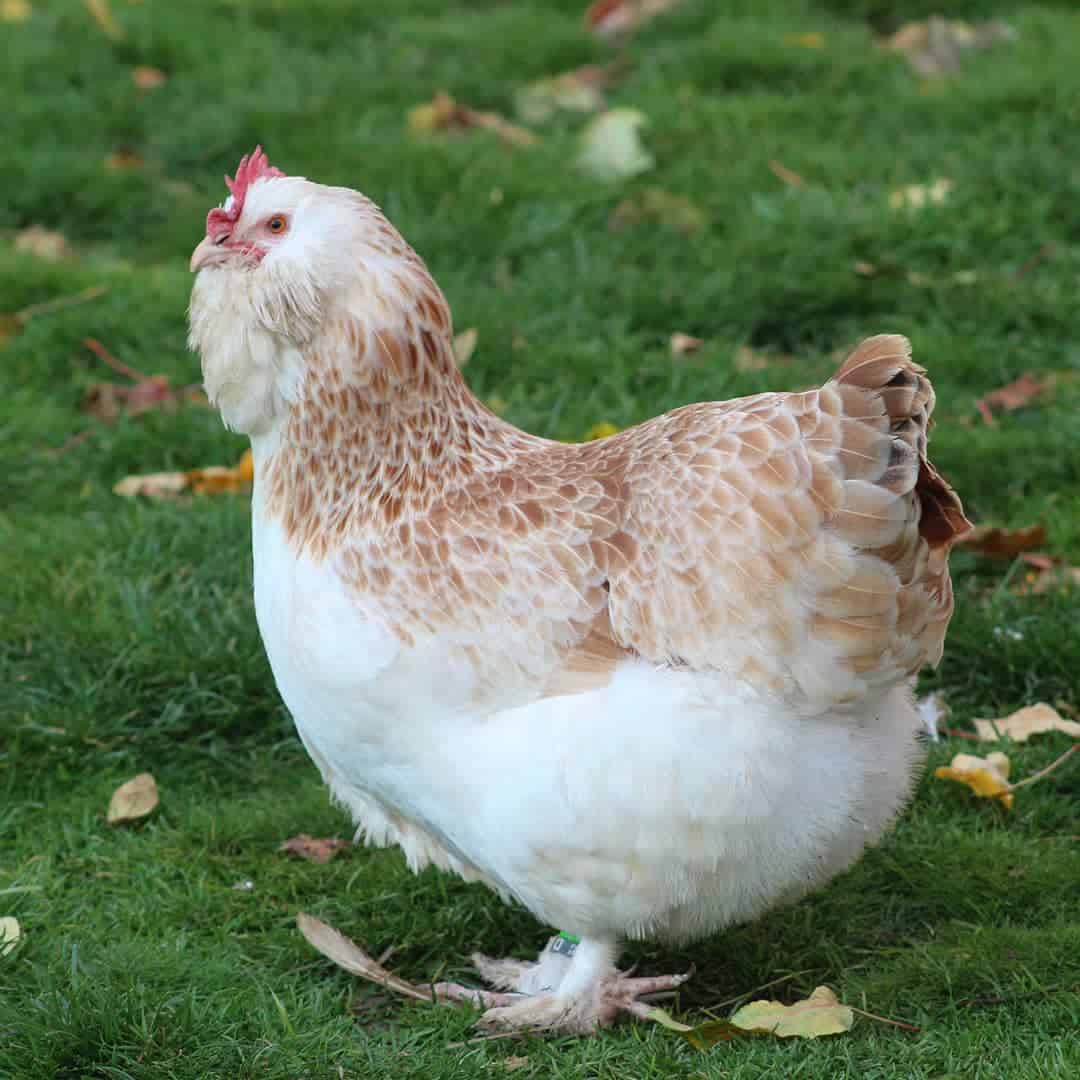
The coop comedy entertainers, the Faverolles, are zealous in their pursuits, curious to the verge of nosiness, and very chatty. They usually rush towards you whenever they spot you approaching in the hope of receiving snacks; however, even without snacks, they seem sincere in their happiness to meet you.
This chicken breed is almost ideal for the city backyard coop or homesteading, and they are rapidly gaining popularity. This chicken breed with 5 toes originated in France in the early 19th century. The name Faverolles derives from the tiny hamlet where it was discovered.
The breed’s history is widely conjectured, as there are no records of the procedure at that period. The Faverolles were developed by crossing several breeds to create a meaty breed.
The following breeds are said to have been utilized to produce the Faverolles chicken: Houdan, Flemish Cuckoo, Brahma chicken, French Rennes, Cochin chicken, Malines chicken, and Dorking chicken. During the early 1900s, the breed found its way to the US.
The Faverolles is a medium-sized chicken having a profusion of plumage that protects them during the wintertime. They also possess five toes like the Dorking, which is most likely the result of a descending gene resulting from a combination of another chicken breed with the Dorking someplace in the Faverolles breed lineage.
Every rooster and hen Faverolles are outfitted with muffs and beards. Their wattle is either hardly noticeable or completely absent. Their solitary comb and crimson earlobes distinguish them. Their feathers are thick and soft, and the roosters are more brightly multicolored than the hens, with darker hackles and tail feathers.
Their legs down to their feet are lightly feathered, and their shank and skin are both color white. The Faverolles are excellent providers of tasty egg and meat. During the winter, they still keep laying eggs when other chickens have ceased. They can produce a number of 150 to 200 eggs each year, which depends on food availability and climate conditions.
3. Sultan Chicken

Sultan chickens are a very ancient Turkish ornamental chicken breed. In its native environment, Turkish people are referring to them as the Serai Taook or Serai Tavuk. In Turkey, Sultan chickens are very prominent.
They are stunning, and the Turkish royalty has a fascination with keeping white fowls in his gardens, where they were eventually named the Sultans Fowl. In 1854, Sultan chickens made their first appearance in England and arrived in the US for the first time in 1867.
Nowadays, this chicken breed with 5 toes is a scarce chicken breed that is also utilized for show purposes. Sultan chickens are tiny, elegant, and completely feathered birds. They have a unique look, with magnificent feathers.
Their feathers are very ornamental from head to toe with large, plump crests, lengthy tails, beards, and a rich leg-to-foot plumage. They feature a V-shaped, small, crimson comb.
Their combs are nearly entirely concealed by feathering. The neck is densely plumed, giving the impression of a truncated head. They have smaller wattles and earlobes that are brilliant crimson in hue.
Their head is adorned with a muff, clusters of plumage forming a beard, and a massive, spherical crest, and they have a reddish face. They belong to a small number of chicken breeds with 5 toes. The breed is available in three colors: white, blueish, and black.
However, the White is the most prevalent and famous. Sultan chickens are very docile, quiet, and amicable fowl. The hens and Roosters are both very simple to tame and manage. Additionally, they make excellent pets and backyard or garden ornamental fowl.
They are excellent flyers, and fencing is necessary to keep them enclosed. They formerly had a distinction for having a lump of excellent meat, with such a big breast and tender whitish meat. They are not very adept food finders but can thrive well in confinement.
4. Houdan
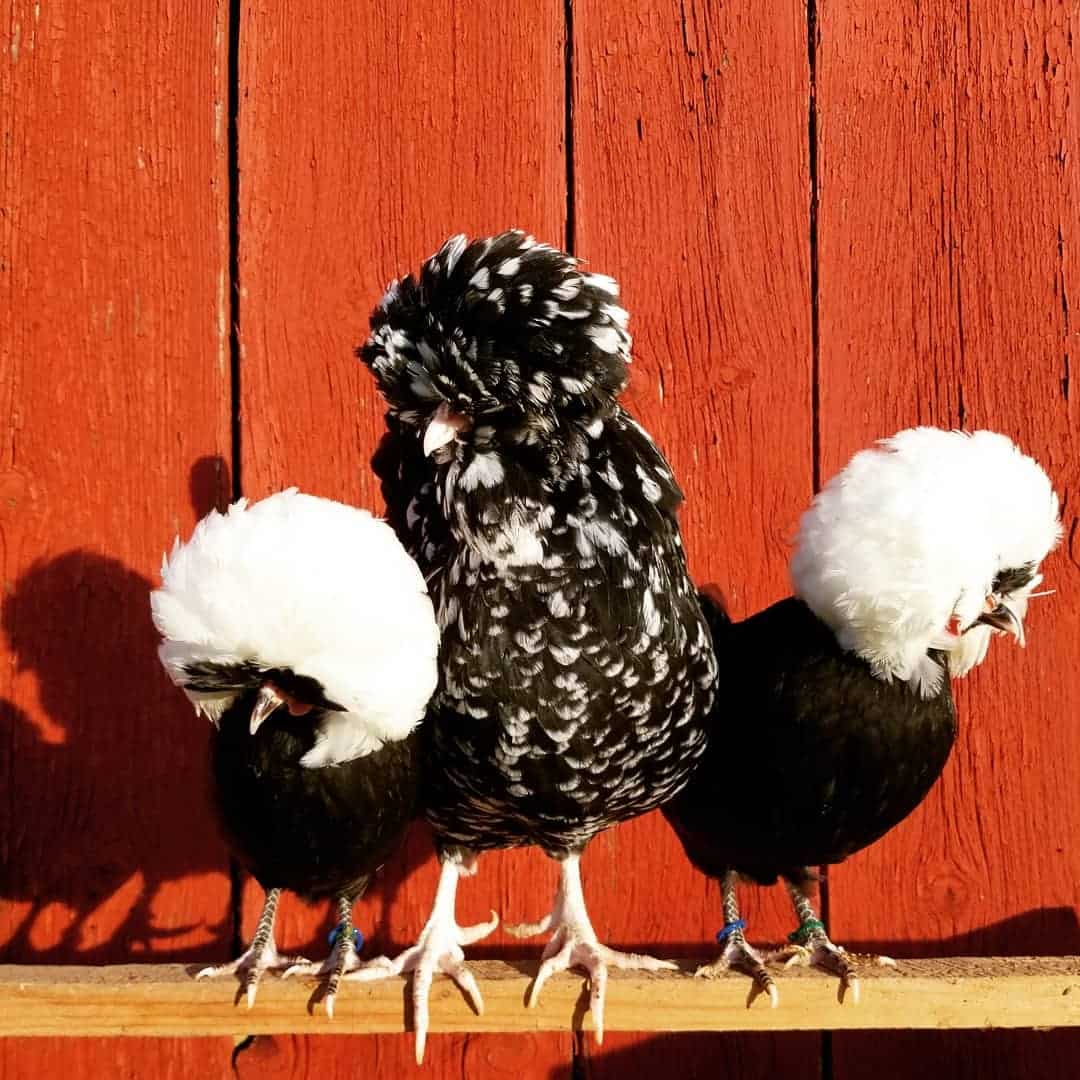
Houdan chickens are an ancient chicken breed renowned for their big white eggs and high-grade meat. In French, they are also known as the Poule de Houdan and were formerly known as the Normandy chicken. The country of France is the origin of the Houdan chickens and was already widespread prior to the year 1700. Numerous modest farms around the French town of Houdan are widely cultivating them.
When and how the French poultry fanciers create this chicken breed with 5 toes is still unknown. They are believed to be a hybrid between Crevecoeur chicken and either Dorking or Polish chicken; they also belong to the few chicken breed with five toes.
They were It was developed initially as a dual-purpose, utilitarian chicken breed. In 1850 Houdan chicken was introduced to England and North America in 1865, respectively. Houdans are a big, bulky breed that excels as a dual-purpose utilitarian fowl capable of producing eggs and meat.
Houdan chickens are distinguished by their beard, crest, V-forming comb, and of course, their one-of-a-kind fifth toe. It is a rare chicken breed with five toes. The APA (American Poultry Association) recognizes two Houdan chicken breed varieties: mottled and white.
Their white skin and standard feathers distinguish both kinds. Their beard, crest, comb, and mainly their five toes all serve to recognize their breed, even when they are still chicks. Houdans have a tiny red V-shaped comb that sits behind their crest.
Their white earlobes are concealed under their crest and beard, and their cute wattles are also red. Houdans have a rectangular body shape with relatively short, sturdy legs. White Houdan breed has distinct whitish-pink legs, while the Mottled breed’s legs are whitish-pink with dark mottles; both are featherless.
They are gentle, docile chickens that lay fairly enough big white eggs. Though Houdan hens aren’t excellent sitters, they do tend to be broody. However, due to their size, they frequently shatter their eggs.
5. Dorking
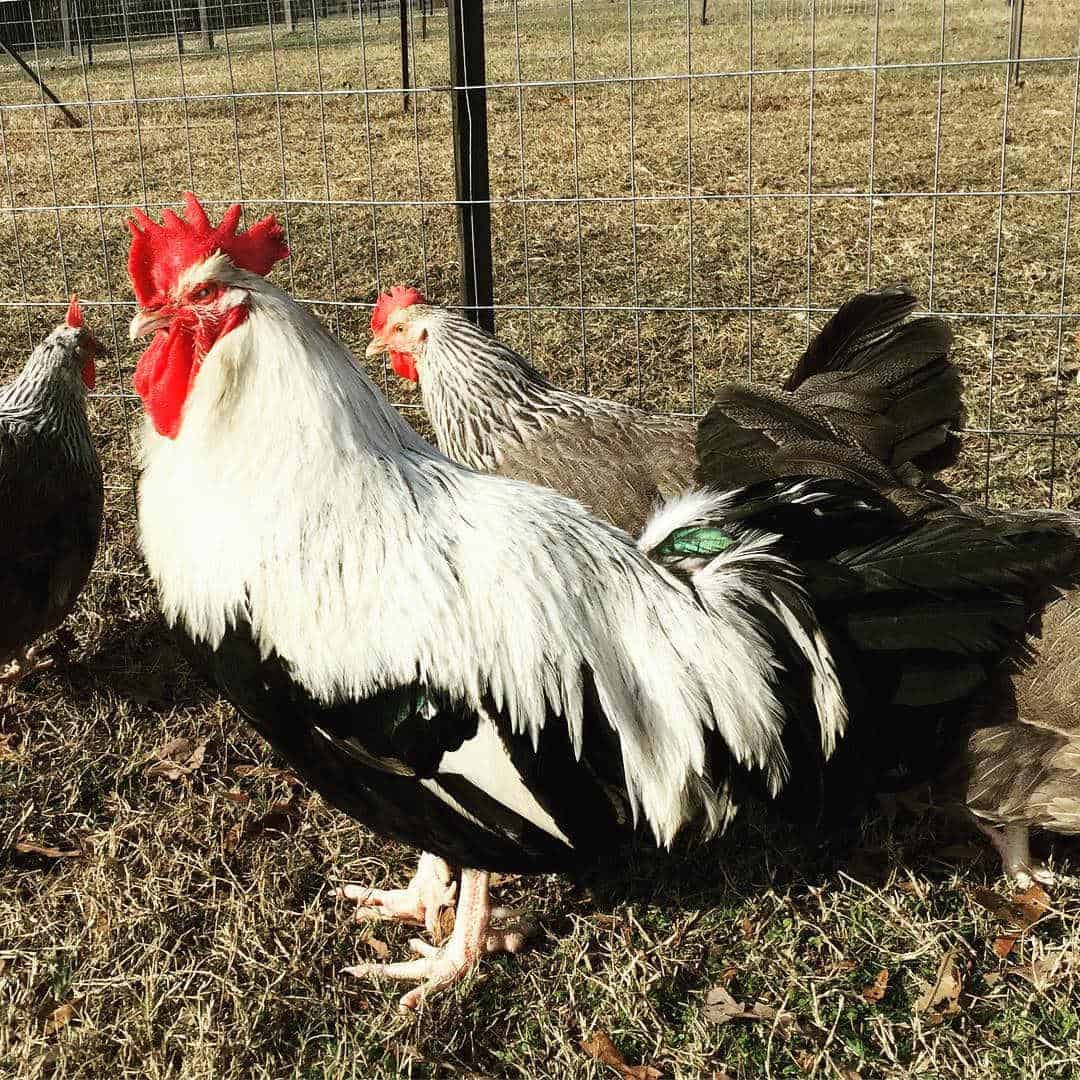
Dorking chickens are among the oldest domestic chicken breeds and belong to the rare chicken breed with 5 toes. They are large, dual-purpose chickens, and their beginnings are a bit mysterious. It is thought that Dorkings evolved during the Roman Empire era somewhere in Italy.
Before 1870, the US is already widely disseminating them, and in 1874, they were accepted to the Standard of Perfection of APA (American Poultry Association). During the 19th century, the Dorkings were regarded as speedy growers with excellent shape.
However, nowadays, they are condemned for sluggish growth and development compared to modern rapidly developing chicken breeds. Without a doubt, contemporary growth aspirations are little favor to broiler production and development experts.
While Dorking chickens have an excellent meat shape and are effectively adapted to range settings, numerous modern chicken breeds are descended from the Dorking chicken breed.
For the purpose of creating meal fowl, Dorking roosters were bred to crossbreed with Indian Game chicken breeds. Additionally, they were applied to develop many new contemporary breeds, like the Speckled Sussex chicken and the beautiful Buff Orpington.
They were brought to Great Britain in 1845, where they made their debut appearance at the British poultry exhibition, where they underwent significant improvement. Dorkings has long been admired for its white meat and delectable flavor.
Dorking chickens have a rectangular body shape; they are short but wide and have five toes. Their comb is single and is one of the very rare breeds that have crimson earlobes. The hens produce white eggs of considerable size.
They are adaptable to and perform well in almost every weather condition. Dorkings lay eggs in the first quarter of the year. However, even as early as they can, the chicks’ maturity and development are pretty slow.
Typically, their maturity and development take up to two years. They live for an average of seven years. Dorking hens make excellent moms and are very smooth to maintain, and they tend to be very broody.
Summary
Having the fifth toe is a highly unusual feature in chickens, and it is never always desired since it provides no proven advantage to the bird or its keeper.
But, it is a notable physical characteristic since only five unique chicken breeds exhibit this unique trait of having five toes. When choosing a breed to add to your flock, you must examine all other aspects, such as sociability and egg production, and maybe consider adding a 5th toe as a bonus.
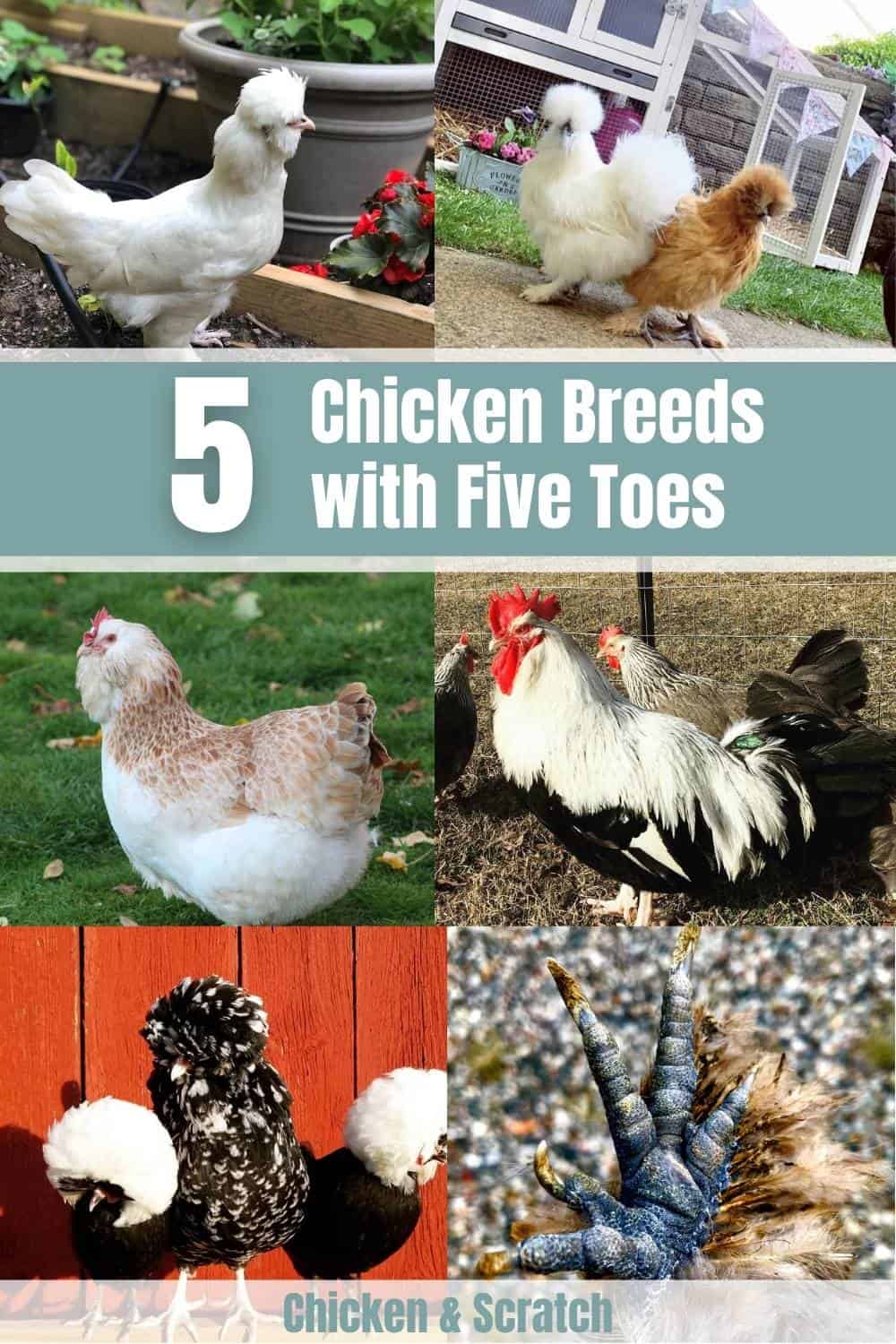

Joseph Hudson has been raising chickens for over 15 years. In 2018, he completed the Agriculture & Natural Resources program at Mt. San Antonio College. He currently raises over 1400 chickens on his 7.5-hectare farm. He keeps sharing his experience on raising healthy and happy chickens on Chicken Scratch The Foundry.
